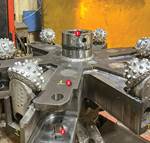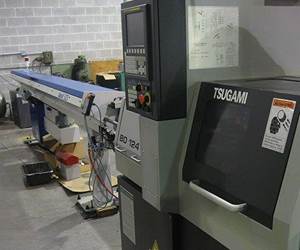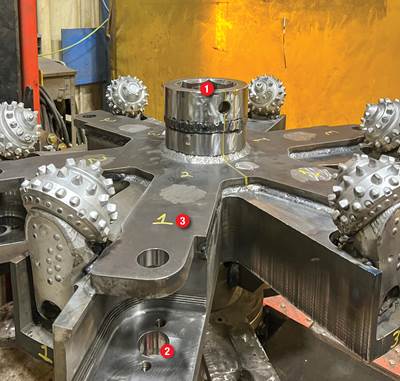Some Useful Measures Of Your Productivity
I am frequently asked for suggestions about how to measure a company’s productivity. In simple terms, productivity can be defined as the amount of output that is achieved when a specific amount of input is expended.
I am frequently asked for suggestions about how to measure a company’s productivity. In simple terms, productivity can be defined as the amount of output that is achieved when a specific amount of input is expended. Both the output and input factors can be defined in various ways. There are numerous ways to calculate productivity, with some being more meaningful to certain companies than others. Let’s take a look at some of the more common approaches to measuring this output/input relationship.
Sales Dollars Per Employee. This may be the simplest of all productivity measurements. Every organization knows its sales dollars for a given period, as well as the number of total employees on site. Taking the total dollars sold in a given period, most typically a month, and dividing this figure by the total number of people in the company yields the sales dollars per employee. For example, a small machine shop with 20 employees that has sales of $1 million in a month will show sales of $50,000 per employee. Some companies prefer to use dollars shipped as a measure of sales dollars, while others use dollars that were sold but not necessarily shipped. Although the sales dollars per employee measure is simple and effective in providing an overall view of the organization’s productivity, it has an obvious weakness. The measure can be misleading when the cost of sales is high. When this is the case, the following approach to productivity measurement may be more appropriate.
“Net” Sales Dollars Per Employee. Like the sales dollars per employee example, this productivity measurement includes the sales dollars, but then subtracts some key costs of sales figures, such as material and subcontracted services. This shows the sales contribution per employee when non-labor related expenses are removed. Using the same example of the 20-employee shop and the $1 million monthly sales figure, if the cost of material is $200,000 and the total cost for all subcontracted services is $100,000, then the net sales per employee drops from $50,000 to $35,000 ($700,000 divided by 20). Some people might find this more representative of what is being sold or produced per employee each month.
Sales Dollars (Net Sales Dollars) Per Hour. Sometimes it can be helpful to analyze sales dollars in finer detail. In this case, using hours as the input to the productivity measure may be preferred. By looking at the total number of hours worked, instead of just the number of employees working, the productivity measure takes into account the need for any extended work hours required to meet sales needs. When extended work hours are needed, productivity figures can be affected. Looking back at the earlier example, if we assume employees normally work an 8-hour day, then the monthly work time would be 160 hours per employee (20 days per month × 8 hours per day). The sales dollars ($50,000) and net sales dollars ($35,000) previously calculated would translate to $312.50 per hour for the sales dollars and $218.75 per hour for the net sales dollars. Now, if in order to reach our sales target it is necessary to work significant overtime, say 40 hours per employee per month, then our dollars per hour will drop significantly—$250 per hour for the sales dollar measure and $175 per hour for the net sales dollar measure. This does not take into account that overtime is typically compensated at a premium rate, but it does provide additional information for when work hours fluctuate.
Of course, using dollars is just one means of measuring output. Alternate measures such as number of pieces or parts produced, weights (pounds, kilograms and so on) processed, lengths (feet, meters and so on) generated or area/volume (square feet, cubic meters, gallons and so on) handled can be substituted for dollars. Using these measures can yield such information as parts shipped per employee, feet produced per employee, gallons processed per hour or square feet generated per hour.
All of the above are useful ways to help a company determine how it is doing. Rather than struggle to find the perfect productivity measure for your business, use one of the methods mentioned above to get started. If the initial measure is deemed unsuitable, then try something else. At least you will be on your way to developing and using a meaningful measure for tracking your performance and gaining a better understanding of how you are doing.
Related Content
10 Tips for Titanium
Simple process considerations can increase your productivity in milling titanium alloys.
Read MoreUnderstanding Swiss-Type Machining
Once seen as a specialty machine tool, the CNC Swiss-type is increasingly being used in shops that are full of more conventional CNC machines. For the newcomer to Swiss-type machining, here is what the learning curve is like.
Read More7 CNC Parameters You Should Know
Parameters tell the CNC every little detail about the specific machine tool being used, and how all CNC features and functions are to be utilized.
Read MoreUnderstanding Errors In Hand-Held Measuring Instruments
Different instruments (and different operators) are prone to different errors.
Read MoreRead Next
The Cut Scene: The Finer Details of Large-Format Machining
Small details and features can have an outsized impact on large parts, such as Barbco’s collapsible utility drill head.
Read More3 Mistakes That Cause CNC Programs to Fail
Despite enhancements to manufacturing technology, there are still issues today that can cause programs to fail. These failures can cause lost time, scrapped parts, damaged machines and even injured operators.
Read More.jpg;maxWidth=970;quality=90)




.jpg;maxWidth=300;quality=90)


















